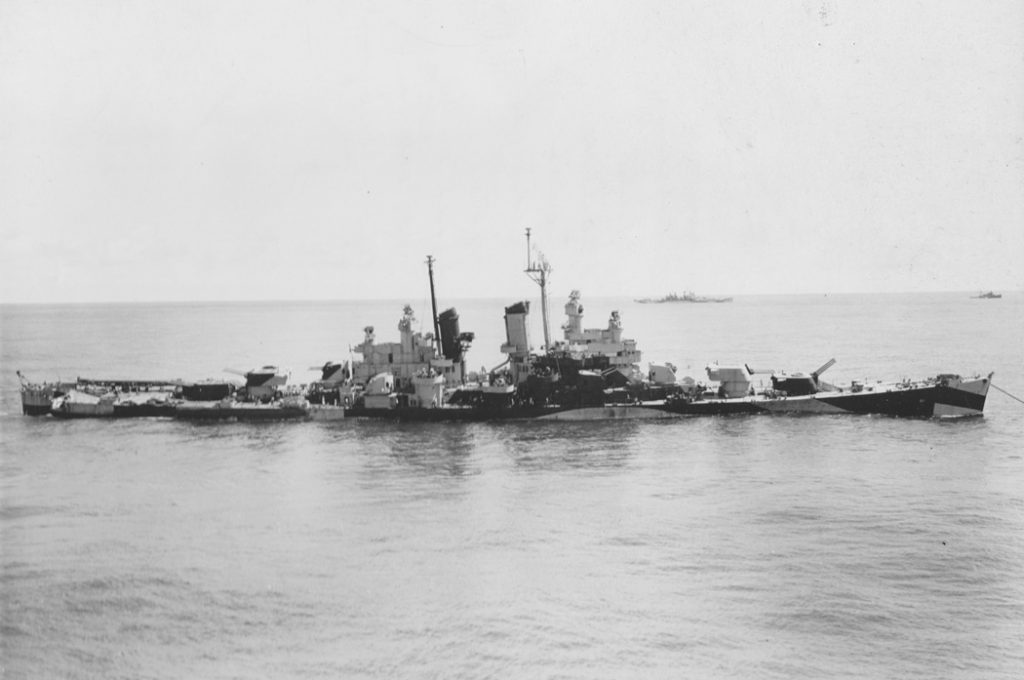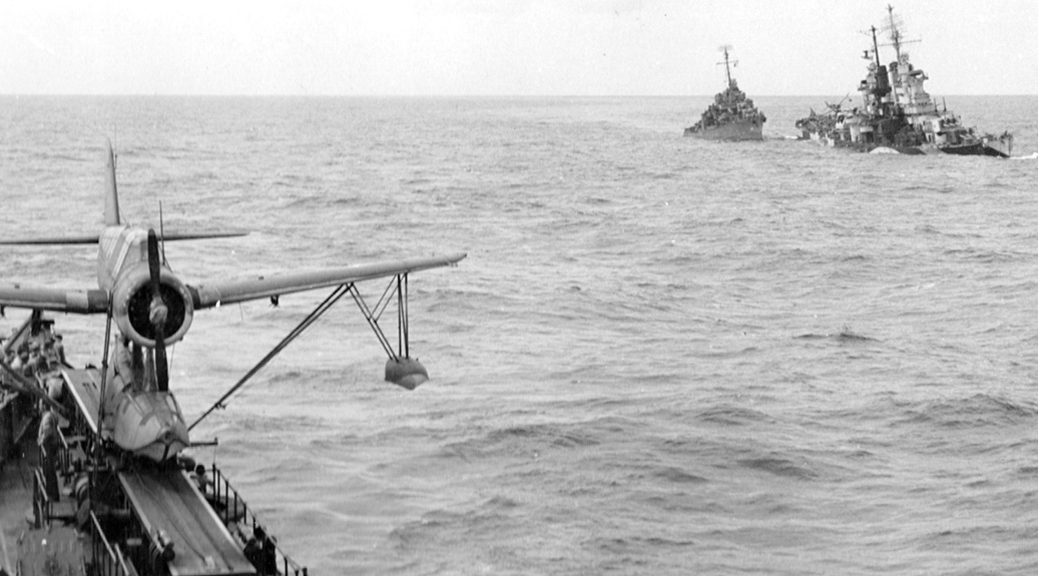In early October, 1944, Task Force 38 continued executing Operation King II, carrying out attacks against Japanese strongholds in the Philippines. Strategies included pre-emptive strikes against Okinawa, Luzon and Formosa (Taiwan) on October 10, 11, and 12. On Oct. 13, the four Task Groups, less than 80 miles off the coast of Formosa, launched blistering attacks on strategic targets (industrial plants, cities and airfields). At 1700 hours, a group of Japanese “Betties*” penetrated the cloud cover and dropped torpedoes on Task Group 38.1. A torpedo struck Heavy Cruiser Canberra (CA-70) below the waterline, killing scores of men and causing her to lose all power. The decision was made not to scuttle or abandon ship, and the Heavy Cruiser Wichita (CA-45) took her in tow. TG38.1 was ordered to stay behind and protect the crippled Canberra, under-tow at less than 4 knots per hour.
On Oct. 14, in early afternoon, the Light Cruiser Houston (CL-81) took the Canberra’s position in the group. About 1815 hours, another group of “Betties” broke in over the Task Group. Most were shot down, but a small group swarmed around the Houston, firing three torpedoes. She swerved away from two, but the third hit her amidships, rendering her dead in the water. Deciding not to abandon or scuttle, Halsey ordered Heavy Cruiser Boston (CA-69) to take Houston in tow. Destination for both cruisers under tow: Ulithi Harbor, 1200 miles away!
On the morning of October 16, the tow of the Houston was transferred from the Boston to Fleet Tug Pawnee. The Boston became lead ship in Task Unit 30.2.2, ordered to protect the Cripples on their retreat. The Cripples came under blistering air attacks, and on the early afternoon (1400 hours) a group of 70 planes attacked. Fighters from the Escort Carrier Cowpens (CVL-25) and the Escort carrier Cabot (CVL-28) scrambled up and shot down most of them, but five of them got through and dropped torpedoes at the Houston, hitting her once again in the stern.
The Japanese had declared a day of National Celebration because their brave pilots had sunk the Third Fleet! Halsey, for his part, dangled the little task Unit as bait, (also known as the “Streamlined Bait” group) hoping the Japanese fleet would come in close to finish off the cripples. (He had positioned two separate Task Groups within easy striking distance.) The enemy fleet closed in, but reconnaissance planes spotted the “Sunken Third Fleet” close by and turned away.
Amazingly, both ships were towed to safety, arriving in Ulithi Anchorage on October 27.
(* Mitsubishi G4M Torpedo Bombers)

